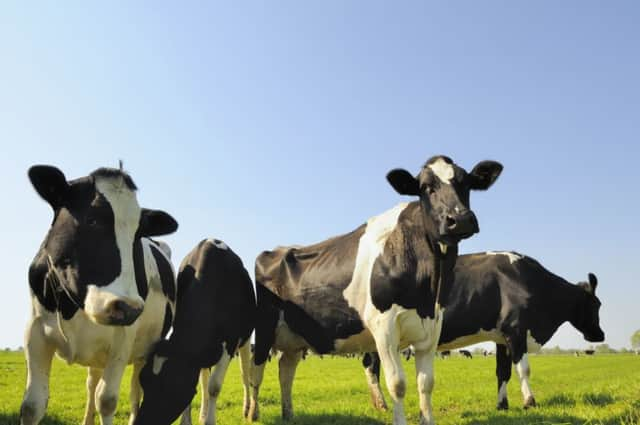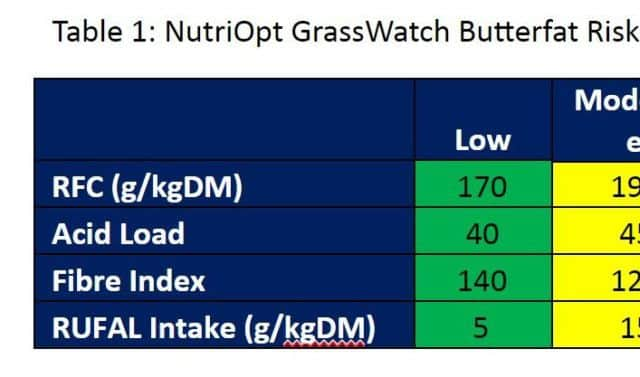Low milk fat in grazing dairy cows


Rather than an individual cow problem, this drop in milk fat occurs throughout the herd, while milk protein concentration, milk yield and intakes remain stable.
Trouw Nutrition GrassWatch studies have shown the highest risk period for this is during April and May grazing. As low milk fat is difficult to correct, it is important to consider preventative measures at turnout.
Advertisement
Advertisement
So why does it occur during spring grazing? There is no single cause of low milk fat, but rather a combination of dietary components in spring grass.


l As spring grass is generally low in fibre and high in sugars, the rumen microbes change so that the volatile fatty acids they produce drive milk yield, rather than support milk fat production.
l Spring grass can have a high polyunsaturated fatty acid content, and these can escape the rumen and inhibit milk fat production
l A drop in rumen pH (rumen acidosis) can change the rumen microbial population so that these polyunsaturated fatty acids escape the rumen and inhibit milk fat production. The lower fibre content of spring grass means cows ruminate less and produce less salivary buffers. A high concentrate feeding rate in-parlour is also a risk factor for rumen acidosis and can exacerbate herd milk fat depression. Over half of Irish dairy cows are affected by acidosis and subacute acidosis during grazing.
Advertisement
Advertisement
When low herd milk fat occurs, these changes in the rumen microbes have already occurred therefore, it is very difficult to make any dietary changes to aid in the recovery of milk fat composition. Many herds report that despite adding dietary fibre (straw, citrus pulp, beet pulp or soya hulls) or rumen health additives (yeasts or rumen buffers), milk fat composition never completely recovers for the rest of the grazing season. Rumen bypass fats can be successfully used to improve milk fat percentage, but it is important to consider the economics of feeding them, and not to feed too much as they can impair rumen fermentation.


Trouw Nutrition can analyze the quality of grass for the risk factors responsible for milk fat depression, which are Rumen Fermentable Carbohydrate (RFC), Acid Load, Fibre Index and Rumen Unsaturated Fatty Acid Load (RUFAL). The results are displayed as a NutriOpt GrassWatch Butterfat Risk Alert table.
Due to the difficulties in restoring milk fat percentage, it is important to take a nutritionist’s advice and make dietary changes to prevent the changes in rumen microflora from happening. As mentioned before, there is no single cause of low herd milk fat therefore, prevention should take account of a number of strategies. Providing straw or fibrous silage around milking time as a buffer feed, will reduce diet fermentability and increase NDF. In addition, controlling rumen pH with buffers or yeast can help resist a drop in rumen pH.